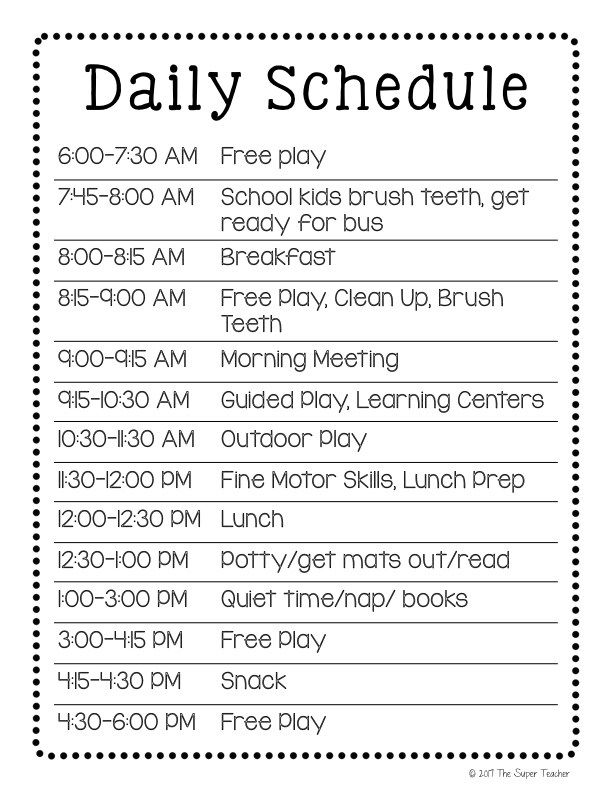

Written by Rylie Day-Walker
In February’s newsletter, we briefly discussed transitions and why they routinely prove to be difficult for young children and their caretakers. This included reasons ranging anywhere from brain development to expectations to ways that we as adults may be working against the children in our lives as we help them navigate these critical moments of their day. However, just as it is best practice to give our children guidance on what to do versus what not to do, providing reasons why transitions may be challenging without any tangible solutions to help make them easier is counterintuitive. Below, you’ll find tools and strategies, many of which overlap or happen simultaneously, that could help ease any stress and tension that may be characteristic of the daily transitions in your homes and classrooms.
Plan ahead & prepare your child/children with visual aids: prepping children for an upcoming transition is one of the ways you can best mitigate adverse reactions or resistance to transitioning to a new activity or task. While there are many strategies you can implement depending on your child’s age, development, and personality, visuals are one of the easiest and most effective ways to help children prepare for what is ahead. Providing visual cues before and during a transition will help ground a child, especially when transitioning from a preferred activity. Visual cues could be a graphic of what is next, a timer for when the current activity will conclude, social stories, etc. Paired with developmentally appropriate verbal warnings and previews, visual aids can be instrumental in setting the foundation for a smoother transition.
Examine your expectations: Reflecting on what our expectations are and if they are realistic for the child/children with whom we are transitioning can help to determine whether or not the idea we have of how a transition should look is a practical one. For instance, an 18-month-old will likely be unable to follow multi step directions; a three-year-old may be overwhelmed by the task of choosing one book from a shelf of dozens; a child with high sensory input needs may not be able to transition from kinetic sand to Circle Time without assistance.
Communicate expectations to children (in a developmentally appropriate way): Once you’ve ensured that your own expectations are realistic, communicating them is imperative. Making sure you have a child’s attention by removing distractions, remaining consistent in developmentally appropriate language, and talking in advance about any upcoming or unexpected changes to a routine or expectation are all crucial facets in effective communication. Another simple strategy is “first/then” language. For example, “First we brush our teeth, then we read the bedtime story,” uses simple language to indicate what the expected step is before a desired activity. Pre-corrections and consistent reminders of an expected behavior before a transition begins, are also proactive approaches in guiding a child from one activity to the next.
Create a Routine: Children crave structure and rely on the adults in their lives to provide it. Knowing that someone they trust is in control provides them with the safety and security necessary to take risks, build confidence, and learn through play. Some of the uneasiness surrounding transitions is often from a lack of routine, or a routine that has not been communicated in a way they understand and can anticipate. When creating and implementing a routine, especially for some of the more dreaded transitions, try to include children as much as possible, whether that is creating a visual schedule together to hang on the wall, or finding a fun way for them to be included in dinner prep. Providing structured choice throughout a transition will also help a child feel in control and fosters independence within the structure of an established routine. Once a routine is created, practicing it ahead of time, when possible, will help promote consistency, provide the opportunity for a child to practice expected behaviors, and provide adults the chance to monitor, role-model skills, and give implicit and explicit instruction.
Don’t make children wait: once a routine is established, children are prepared, expectations are communicated, and the time has come to transition, don’t make them wait. Doing so will create resistance, avoidance, distraction, and any number of undesirable behaviors while children seek to entertain themselves or otherwise try to make sense of what is expected of them when the reality doesn’t align with what they were told to anticipate. Try not to be too distracted that you don’t notice when the timer goes off; make sure that art project supplies are prepared before Circle Time is over; do you know where their shoes are? Eliminating or reducing wait time takes follow-through and intentionality on the part of the adults, but can pay off in dividends.

No Comments